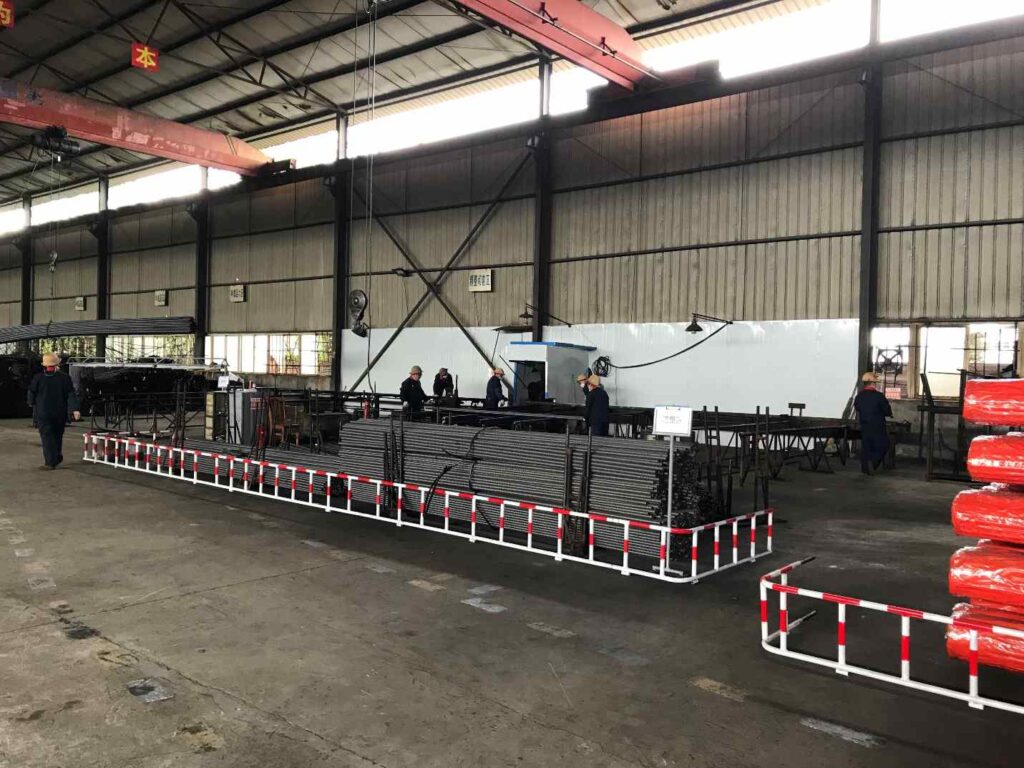Whether you’re working on a high-rise, a home, or a retaining wall, ground anchor bolts are what hold your structure steady against time, tension, and the forces of nature. But if you choose the wrong bolts or install them poorly, you could be setting your project up for cracks, shifts, or even a total collapse.
This post will show you why ground anchor bolts matter, the most common installation mistakes, and what you can do to make sure your structure stays safe and solid for years to come. Whether you’re an experienced contractor or a hands-on DIY builder, these tips will help you avoid costly errors and build with confidence.
What Are Ground Anchor Bolts and Why Are They Important?
Ground anchor bolts are special fasteners designed to secure structures to the ground. They are basically different from regular bolts because they are engineered to withstand significant loads, tension, and shear forces originating from both the structure and environmental factors. Ground anchor bolts are critical in stabilizing foundations, preventing settlement, and resisting lateral forces that could cause tilting or collapse.
Ground anchor bolts are used across different applications. In residential projects, they stabilize retaining walls or underground structures. In commercial developments, they support large concrete foundations, bridges, or industrial equipment. Infrastructure projects such as tunnels, dams, or subway systems rely heavily on ground anchor systems to maintain integrity and safety.

How Ground Anchor Bolts Work
The ground anchor bolt self-drilling mechanism allows them to be installed directly into soil or rock without the need for extensive excavation or concrete pouring. Here’s how the process works:
- Step 1: Site inspection and planning
Before installation, a detailed geotechnical assessment is conducted to understand soil conditions. This information helps determine the appropriate type and size of ground anchor bolts needed. - Step 2: Positioning
The site is marked for precise placement of the bolts, ensuring proper alignment according to the structural design. Accurate positioning is vital to distribute loads evenly and prevent future issues. - Step 3: Self-drilling installation
The self-drilling feature of the anchor allows it to cut through soil or rock as it is turned into the ground. This process involves rotating the bolt using special equipment, which creates a hole or threads into the earth while simultaneously installing the bolt. - Step 4: Load testing and tensioning
Once embedded, the bolt is tested for load capacity. Tensioning devices are used to tighten the bolt to specified levels, ensuring it can withstand the expected forces. - Step 5: Securing and final checks
The final step involves sealing or grouting the bolt if necessary to prevent corrosion and to reinforce its holding capacity. The entire installation is checked for alignment, load capacity, and stability before proceeding with the construction.
What Happens When You Don’t Use Ground Anchor Bolts Correctly?
Failure to properly install ground anchor bolts can lead to serious structural problems. When these bolts are incorrectly installed or of poor quality, their ability to stabilize the foundation greatly reduces.
- Structural instability is the most immediate concern. Without secure anchoring, foundations may shift, tilt, or settle unevenly.
- Cracks can develop in walls, floors, or slabs, which not only compromise the aesthetic appeal but also weaken the overall integrity of the structure. In severe cases, the foundation might experience failure entirely, leading to catastrophic collapse.
- Repairing damaged foundations or replacing entire structures can cost thousands — sometimes even millions — depending on the scope. Moreover, safety hazards posed by unstable buildings or retaining walls pose risks to occupants, workers, and passersby.
Common Mistakes to Avoid When Installing Ground Anchor Bolts
Here are some common errors to watch out for when installing ground anchor bolts:
- Using the wrong bolt type or size: Not all ground anchor bolts are suitable for every soil condition or structural requirement. Selecting an inappropriate size or type can cause insufficient load capacity or premature failure.
- Incorrect depth or alignment: Installing bolts shallower than recommended or misaligning them can lead to ineffective load transfer. This misstep is usually caused by poor planning or measurement errors.
- Poor-quality materials or corroded hardware: Using low-grade steel or hardware with signs of rust compromises the integrity of the entire system. Corroded anchors weaken over time, especially in humid or saline environments.
- Inadequate torque or over-tightening: Not applying the correct tension can cause the bolt to slip or fail. Over-tightening may damage the bolt or the surrounding soil, reducing its holding capacity.
- Skipping geotechnical assessments: Failing to analyze soil conditions before installation can lead to choosing unsuitable anchors or incorrect installation methods, risking instability.

How ONTON Technology Co., Ltd Supports Safer Foundations
At ONTON Technology Co., Ltd, we recognize that the integrity of your structure depends heavily on the quality and proper installation of ground anchor bolts. We specialize in manufacturing reliable self-drilling anchor bar systems designed to perform under tough soil and rock conditions.
We also offer detailed technical support to assist with site assessments, bolt selection, and correct installation procedures.
If you have specific needs or questions about ground anchor bolts, don’t hesitate to contact us today. Our experts are ready to assist you in choosing the right system for your project and ensuring safe, durable foundations for years to come.





